When we talk about national issues, there are some that highlight concerns for our adolescent population, ages 10-19, as well as young adults. As 2022 was coming to an end, the Centers for Disease Control and Prevention (CDC) issued a report warning of the dangers of fentanyl on teens. Additionally, aiming to protect older teens and young adults, we saw action in Congress last fall to try and curb rampant sexual attacks on college campuses. With these issues becoming of increased concern, Princeton Perspectives sought to find out what the trends are locally.
FENTANYL DRUG OVERDOSES
 The sobering truth is that nationally, overdose deaths of teens caused by opioids have doubled in recent years, while the use of opioids by teens has dropped drastically. Why? Illicit fentanyl. This synthetically manufactured form differs from and is more potent than pharmaceutically manufactured prescription fentanyl. Sadly, when adolescents think they’re buying prescription pills off the street, they’re often buying something counterfeit – and they do not know what is in it. Think cannabis is a better option? Such fentanyl is also now often used to lace unregulated marijuana as well as cocaine. As the Partnership for a Drug Free New Jersey publicizes on a NJ Turnpike toll booth (see photo), just a tiny amount can be deadly. The amount equal to one sugar packet is enough to kill hundreds of people.
The sobering truth is that nationally, overdose deaths of teens caused by opioids have doubled in recent years, while the use of opioids by teens has dropped drastically. Why? Illicit fentanyl. This synthetically manufactured form differs from and is more potent than pharmaceutically manufactured prescription fentanyl. Sadly, when adolescents think they’re buying prescription pills off the street, they’re often buying something counterfeit – and they do not know what is in it. Think cannabis is a better option? Such fentanyl is also now often used to lace unregulated marijuana as well as cocaine. As the Partnership for a Drug Free New Jersey publicizes on a NJ Turnpike toll booth (see photo), just a tiny amount can be deadly. The amount equal to one sugar packet is enough to kill hundreds of people.
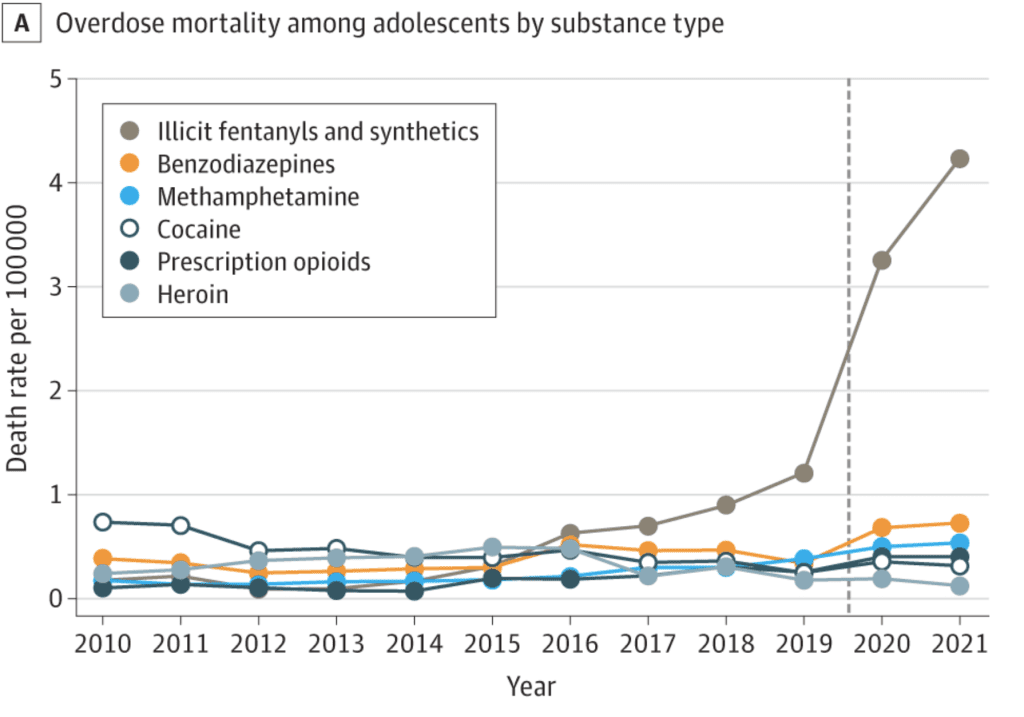
It is believed this deadly fentanyl, created in Mexican factories, using chemicals from China, has surged in the U.S. as it flows across the southern border. Earlier this week, President Biden met with Mexican officials to discuss how to stop fentanyl from crossing in, a drug which the CDC says was responsible for more than 71,000 drug overdose deaths in the U.S. in 2021 (that’s two-thirds of reported overdose deaths). The new report issued by the CDC in December shows that from 2019-2021, 84% of 10 to 19-year-olds overdose deaths involved manufactured synthetic fentanyl. This represents a 182% increase. Additionally, a study by Joseph Friedman, et al published in JAMA last April looked back to 2010. It found that adolescent overdose deaths from illicit fentanyl went up 250% from 2010 to 2021 with fentanyl responsible for more than 77% of adolescent drug overdose deaths in 2021.
This year has just begun, but during the first nine days of 2023, two people died in Mercer County from suspected drug overdose deaths. There were 64 deaths statewide. Three of them, or 5% of those that died, were under age 14.

This graph demonstrates how fentanyl overdose deaths have increased dramatically in New Jersey compared with those from other drugs (fentanyl is in red). Of 117 overdose deaths in Mercer County between 2015-2020, 97 were from fentanyl. Reports from last year indicate that 99 drug-related overdose deaths were reported in Mercer County from January through November. The National Center for Drug Abuse Statistics shares that the drug overdose death rate in NJ is 53.14% higher than the national average (keeping in mind 25 to 44-year-olds contribute most to this statistic).
Throughout New Jersey, 588 visits to hospitals for non-deadly overdoses, or 53.3 per 100,000 residents, were by people aged 15-24. Like mentioned above, 25 to 34-year-olds comprised the greatest number of visits in NJ that year, 169.9 per 100,000 residents. There were 406 drug-related non-fatal overdose visits just at Mercer County hospitals caused by opioids in 2021, of all ages.
 Synthetic fentanyl is the drug to be aware of today. The available data for those up to age 21 in New Jersey shows that drug-related deaths overall have stayed relatively low, but national data indicates this drug is to blame for an increasing number of those deaths. From 2015 to 2022 drug-related deaths have hovered between 1-3% for New Jerseyans ages 18-21. For those under 18, the number is lower, hovering between 0.1%-.4% in that time frame. There does not appear to be data that directly shows the amount of local adolescent overdose deaths caused by illicit fentanyl, but it is probable that since the data for NJ, and more specifically Mercer County, show a leap of fentanyl-related deaths overall, and national data clearly indicates a jump in fentanyl overdoses in the adolescent group, local teens are suffering from the same tragedy.
Synthetic fentanyl is the drug to be aware of today. The available data for those up to age 21 in New Jersey shows that drug-related deaths overall have stayed relatively low, but national data indicates this drug is to blame for an increasing number of those deaths. From 2015 to 2022 drug-related deaths have hovered between 1-3% for New Jerseyans ages 18-21. For those under 18, the number is lower, hovering between 0.1%-.4% in that time frame. There does not appear to be data that directly shows the amount of local adolescent overdose deaths caused by illicit fentanyl, but it is probable that since the data for NJ, and more specifically Mercer County, show a leap of fentanyl-related deaths overall, and national data clearly indicates a jump in fentanyl overdoses in the adolescent group, local teens are suffering from the same tragedy.
Besides abstaining, there are some things available to help protect against fentanyl. Fentanyl test strips are available, so people can check how much fentanyl is in the product they are about to use. They are considered illegal drug paraphernalia in most states, but in January 2022, Gov. Murphy signed a law decriminalizing them in NJ. Additionally, having Naloxone (more commonly known as NARCAN) on hand, a medication that blocks the effects of opioids during an overdose, can save a life. Between 2017-2022, 2,865 people in Mercer County were administered Naloxone. 70% occurred in Trenton, with Hamilton and Ewing providing a combined 16%. In Princeton, 66 people were treated, accounting for the 4th largest number of incidents in Mercer. 54 of the people that received Naloxone in Mercer County during this time fell between the ages of 16-19.
The Opioid Overdose Prevention Network (OOPN), a partnership between the NJ Division of Mental Health and Addiction Services and the Division of Addiction Psychiatry at Rutgers Robert Wood Johnson Medical School works to counter this by handing Naloxone out to the public.
“We are all somehow impacted by opioids, whether we know it or not. We cannot pretend that it is happening somewhere else and not in our families or neighborhood. We have to do our part to change that narrative,” reminds Queenie Reda, Health Educator at Rutgers RWJ. “Our Naloxone trainings help spread awareness and provides education on opioid overdoses and the importance of using Narcan. Naloxone and Narcan are the same (naloxone is the generic and Narcan is the brand name). Naloxone can save lives and it is our goal to empower community members to recognize an opioid overdose and utilize Narcan.”
Since 2017, OOPN has provided approximately 78 trainings and kit refills to Mercer County agencies such as municipal alliances, libraries, YMCAs, physician offices, as well as treatment and social service agencies. Additionally, through these trainings, they have given nearly 800 kits to individuals. Local individual residents can also register for a public Naloxone training date, but to just get Naloxone, you can stop into any pharmacy. In late December, New Jersey became the first state in the nation to allow anonymous and free access to the life-saving drug without a prescription.
SEXUAL ASSAULTS
 Another threat to older teens and young adults is that of sexual assault on the college campus, believed to affect far more students than reports indicate. In September, the U.S. Justice Department awarded more than $10 million to target this issue, offering 36 grants through the Grants to Reduce Sexual Assault. In October, the Campus Accountability and Safety Act was introduced in Congress, aiming to combat sexual assaults on campus through better transparency, as well as improved protection and support for victims. According to the Rape, Abuse & Incest National Network (RAINN), 13% of all college students experience some form of rape or sexual assault. College-aged women (18-24) are at 3x more risk of experiencing sexual assault than the average woman while 26.4% of undergraduate females and 23.1% of LGBTQ students are said to have been raped or sexually assaulted on campus. The primary source of data for these statistics comes from the US Department of Justice, which gathers not just reported data but includes that collected from surveys and interviews as well. It is common for victims to not report such crimes, as RAINN statistics show only 20% of female victims on campus report such assaults.
Another threat to older teens and young adults is that of sexual assault on the college campus, believed to affect far more students than reports indicate. In September, the U.S. Justice Department awarded more than $10 million to target this issue, offering 36 grants through the Grants to Reduce Sexual Assault. In October, the Campus Accountability and Safety Act was introduced in Congress, aiming to combat sexual assaults on campus through better transparency, as well as improved protection and support for victims. According to the Rape, Abuse & Incest National Network (RAINN), 13% of all college students experience some form of rape or sexual assault. College-aged women (18-24) are at 3x more risk of experiencing sexual assault than the average woman while 26.4% of undergraduate females and 23.1% of LGBTQ students are said to have been raped or sexually assaulted on campus. The primary source of data for these statistics comes from the US Department of Justice, which gathers not just reported data but includes that collected from surveys and interviews as well. It is common for victims to not report such crimes, as RAINN statistics show only 20% of female victims on campus report such assaults.
Princeton is home to the world-renowned Princeton University (PU) and nearby institutions including Rider University (Rider) and The College of New Jersey (TCNJ). Are our local campuses undergraduates experiencing this? It’s a little hard to tell, as analysis by the American Association of University Women (AAUW) found that most institutions are still not disclosing reported incidents.
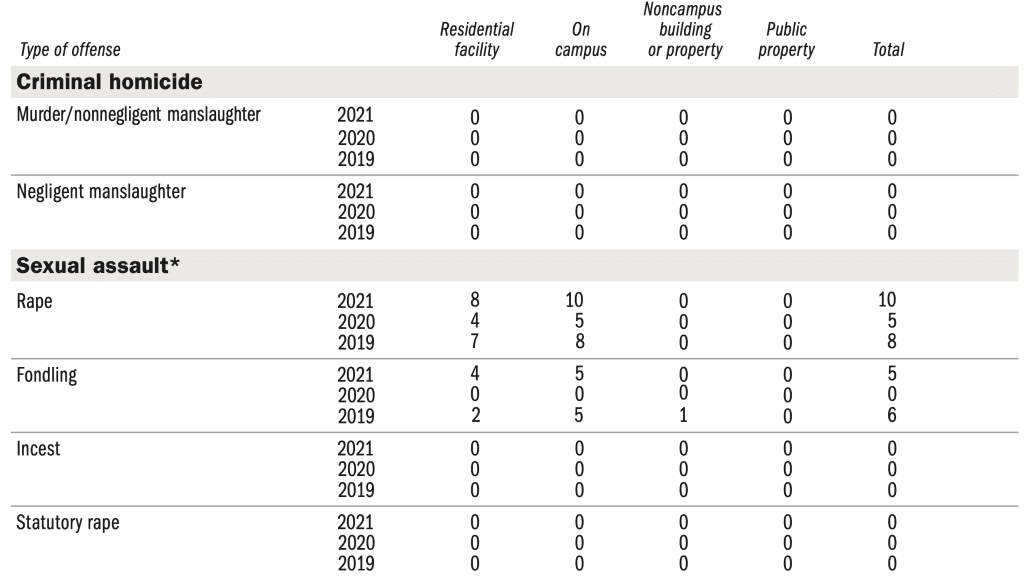
The Jeanne Clery Disclosure of Campus Security Policy and Campus Crime Statistics Act (Clery Act) is a federal statute requiring colleges to publish a report annually of campus crime statistics. The PU Annual Security and Fire Safety Report 2022 (detailing data through 2021) shows that incidents of rape and fondling have increased slightly on campus over the past three years (keeping in mind that 2020 data is from a year with significant COVID off-campus learning). There were 10 reported rapes in 2021 compared to 8 in 2019, 8 of which occurred in a residential facility. 9 fondling incidents were reported in 2021 compared to 7 in 2019. No rapes have been reported on campus for this fall.
In 2015, 2016 and 2017, PU put a survey out to students, called We Speak, to collect information about inappropriate sexual behavior taking place on campus. The last published results are from the 2017 report, which indicated that 1 in 5 students experienced some form of unwanted sexual contact on campus during the 2016-2017 school year, 13% of undergraduates. That is very much in line with the national data, and up from 1 in 6 the previous year. 61% of students on the 2017 survey said the assailants of their sexual attacks were other PU undergraduate students. Sexual misconduct was more commonly found to occur between 1st and 2nd year students.
Following the 2017 administration of the We Speak survey, PU decided to shift to an every-four-year survey model. The results of the 2022 We Speak survey are not due out until springtime.
“Analysis of the data collected was underway in the fall and in the spring, the CPUC Ad Hoc Committee on Sexual Climate, Culture, and Conduct will review findings, discuss recommendations and share that information with the community. Then work will begin to implement the recommendations,” explains Michael Hotchkiss, Princeton University Director of Media Relations. “In addition, work has been underway to implement recommendations of the 2019 report from the joint committees on sexual misconduct and campus climate. To date, 15 of the 17 recommendations in the report have been implemented. Changes include providing certain financial support for parties to engage an attorney as their adviser in the Title IX Sexual Harassment process and the University Sexual Misconduct process, as well as additional staffing in the SHARE office.”

At Rider, the 2021 Annual Security and Fire Safety Report shares data as recently as 2021 which shows 8 incidents of rape and two incidents of fondling were reported in that year (though two are noted to have taken place prior to 2021). Of reported rapes, 6 are noted as having occurred in a residential facility. Comparatively, one rape and 8 fondling incidents were recorded for 2019. Rider is hoping its efforts will soon reduce these number.
“Annually, Rider provides prevention programs regarding sexual assault, domestic violence, dating violence and stalking for all new students, faculty, staff and administrators. The University also conducts ongoing prevention and awareness campaigns for all students, faculty, staff and administrators, through campus-wide events; annual notification of the University’s Anti-Harassment and Non-Discrimination Policy and available resources; and training for Public Safety, Student Affairs, Residential Programs and Athletic staff, resident students, freshman seminar coordinators, all new and returning student-athletes, sororities and fraternities, and students clubs and organizations,” says Rachel Stengel, Rider University Director of Communications. “The University also implemented a Report and Support campaign to encourage students to report incidents of sexual violence, bias, discrimination and harassment, with the goal of connecting them to support services as quickly as possible. “

TCNJ’s Office of Title IX and Sexual Misconduct End of Year Report for 2021-2022 shares instances of prohibited conduct that’d been reported to them. 122 student reports were received during the 2021-2022 school year about conducts including rape, fondling, sexual harassment, stalking, dating violence and more. 13 rapes were reported, 10 incidents of fondling. TCNJ’s Annual Security and Fire Safety Report 2022 shares 8 on campus rapes in 2021 (all in residential facilities) with no reports of fondling down from 2019, when 13 rapes were reported (12 in residential facilities) with 8 incidents of fondling. (Due to mostly off-campus learning, there is just one campus rape reported for 2020.)
Keep in mind, the local college statistics do not account for gender, they are overall numbers, and they are only those that have been reported. But in 2021, with just over 5,300 undergraduate students enrolled at PU, little more than 3,200 at Rider and almost 7,000 at TCNJ, there are far fewer documented rapes on our local college campuses than the national statistics show. It is said that four out of five female college students do not report sexual assaults. Student surveys compared to published reports are demonstrating this to be true.
While there are students who make it through their teenage and young adult years without taking drugs or being victim of a sexual assault, the odds are becoming increasingly larger that many will. Reports show that having healthy dialogues your children about the potential of such harms means they’ll be more alert and likely more open with you should they encounter any. If you or someone you know is experiencing a problem with fentanyl or other drugs, you can contact Corner House or Princeton House Behavioral Health for local assistance. For victims of sexual assault, there is also help nearby. NJ Coalition Against Sexual Assault offers a 24-hour Statewide Hotline at 1-800-601-7200.

Lisa Jacknow spent years working in national and local news in and around New York City before moving to Princeton. Working as both a TV producer and news reporter, Lisa came to this area to focus on the local news of Mercer County at WZBN-TV. In recent years, she got immersed in the Princeton community by serving leadership roles at local schools in addition to volunteering for other local non-profits. In her free time, Lisa loves to spend time with her family, play tennis, sing and play the piano. A graduate of the S. I. Newhouse School of Public Communications at Syracuse University, Lisa was raised just north of Boston, Massachusetts but has lived in the tri-state area since college. She is excited to be Editor and head writer for Princeton Perspectives!

 There are many issues the Federal government has on its plate as it finished 2022 and begins 2023. Sometimes what we see taking place in the national agenda is similar to what we experience here in New Jersey and Mercer County. Other times, there are vast differences occurring. From inflation to gun control, cannabis to abortion, what are things like right here at home?
There are many issues the Federal government has on its plate as it finished 2022 and begins 2023. Sometimes what we see taking place in the national agenda is similar to what we experience here in New Jersey and Mercer County. Other times, there are vast differences occurring. From inflation to gun control, cannabis to abortion, what are things like right here at home?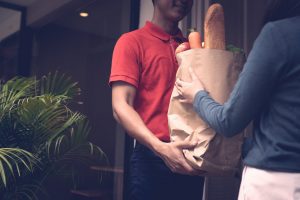 Food prices rose 8.6% in the NJ region, and that impact was definitely felt here in Princeton.
Food prices rose 8.6% in the NJ region, and that impact was definitely felt here in Princeton.  Availability of cannabis is increasing nationwide, while the Federal government still considers it an illegal substance. 20 retail cannabis stores have opened in New Jersey this past year, bringing in an estimated $116,572,533 in sales between July-September 2022. With Missouri and Maryland voters deciding to go legal, 21 states and Washington DC now offer cannabis for sale to anyone over 21. As more states legalize, so do the numbers of youth using it. A December 2022 study published in
Availability of cannabis is increasing nationwide, while the Federal government still considers it an illegal substance. 20 retail cannabis stores have opened in New Jersey this past year, bringing in an estimated $116,572,533 in sales between July-September 2022. With Missouri and Maryland voters deciding to go legal, 21 states and Washington DC now offer cannabis for sale to anyone over 21. As more states legalize, so do the numbers of youth using it. A December 2022 study published in 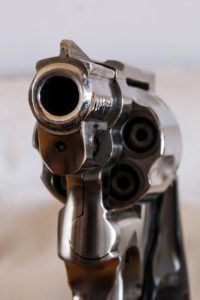 Like abortion, gun control legislation remains vastly partisan. In June 2022,
Like abortion, gun control legislation remains vastly partisan. In June 2022, 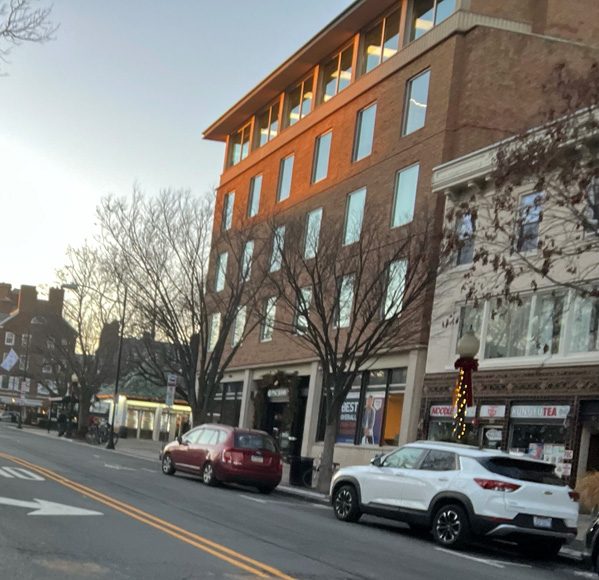 Sunday morning, I was driving through town, south on Nassau Street from Harrison towards 206. It’s very peaceful at that time of day, which allows the beauty of the buildings and layout to really shine. In my normal days of hustle and bustle, there are few moments like that which remind me of the things that make Princeton stand out from other towns.
Sunday morning, I was driving through town, south on Nassau Street from Harrison towards 206. It’s very peaceful at that time of day, which allows the beauty of the buildings and layout to really shine. In my normal days of hustle and bustle, there are few moments like that which remind me of the things that make Princeton stand out from other towns.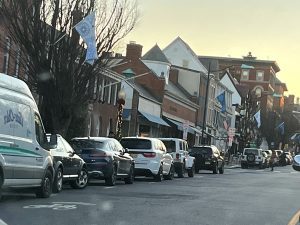 Like a good soup gets its flavor from the ingredients you put into it, a municipality becomes what it is made of – its schools, stores, restaurants and community. Each part has its purpose. In Princeton, the variety of commerce areas offer opportunities for locally owned businesses to add a lot of their unique flavor.
Like a good soup gets its flavor from the ingredients you put into it, a municipality becomes what it is made of – its schools, stores, restaurants and community. Each part has its purpose. In Princeton, the variety of commerce areas offer opportunities for locally owned businesses to add a lot of their unique flavor.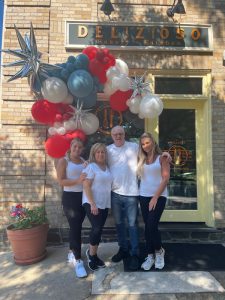 “This place reminds me of the show Cheers. Meaning, these are our customers but they’re also our friends and family,” explains Eric Weshner, who owns
“This place reminds me of the show Cheers. Meaning, these are our customers but they’re also our friends and family,” explains Eric Weshner, who owns 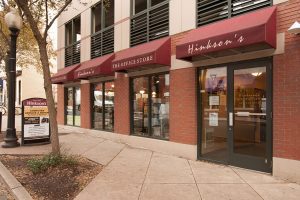 Princeton is also home to Andrew Mangone, who grew up here, working at his uncle’s stationary store on Nassau Street. The store, originally named Roland Stationary, has been around since the mid-1800s. Now, in 2022,
Princeton is also home to Andrew Mangone, who grew up here, working at his uncle’s stationary store on Nassau Street. The store, originally named Roland Stationary, has been around since the mid-1800s. Now, in 2022,  Just slightly younger than Hinkson’s is
Just slightly younger than Hinkson’s is  “One of my favorite things is when I’m in the store and I meet someone who says, ‘My dad bought his engagement ring from your grandfather and now there’s not even a question I was coming here to buy mine from you.’ That level of community support, where people say we are not even going to think about other stores or online, we support local, and we support the businesses that are in our community. That happens every day and it’s amazing,” recalls Siegel.
“One of my favorite things is when I’m in the store and I meet someone who says, ‘My dad bought his engagement ring from your grandfather and now there’s not even a question I was coming here to buy mine from you.’ That level of community support, where people say we are not even going to think about other stores or online, we support local, and we support the businesses that are in our community. That happens every day and it’s amazing,” recalls Siegel. Less than half a mile north on Nassau Street sits
Less than half a mile north on Nassau Street sits  “I think the heart of it is having good 2-way communication. It’s really important to have realistic expectations about what is happening on the part of businesses, but for the municipality it’s also important to understand the effect all these projects are having and trying to mitigate downside to greatest extent possible,” explains Isaac Kremer, Executive Director of the new
“I think the heart of it is having good 2-way communication. It’s really important to have realistic expectations about what is happening on the part of businesses, but for the municipality it’s also important to understand the effect all these projects are having and trying to mitigate downside to greatest extent possible,” explains Isaac Kremer, Executive Director of the new  Hinkson’s, for example, has hit the proverbial jackpot when it comes to things that have made business quite difficult – the pandemic shift from office environments to work-from-home, the on-and-off closing of the entrance to Spring Street due to the Witherspoon Street construction and the competition of big box stores and online shopping have created enormous hurdles for its survival. To keep afloat, both co-owners now also work other fulltime jobs. To stay relevant, the business model has shifted to include an online presence, delivery, shipping and printing. If one comes in person, they will still find unique stationary items like high end paper, journals and fountain pens.
Hinkson’s, for example, has hit the proverbial jackpot when it comes to things that have made business quite difficult – the pandemic shift from office environments to work-from-home, the on-and-off closing of the entrance to Spring Street due to the Witherspoon Street construction and the competition of big box stores and online shopping have created enormous hurdles for its survival. To keep afloat, both co-owners now also work other fulltime jobs. To stay relevant, the business model has shifted to include an online presence, delivery, shipping and printing. If one comes in person, they will still find unique stationary items like high end paper, journals and fountain pens. To differentiate itself from other Princeton restaurants and invite people to come try it, Ficus decided to not only open as a restaurant but an art gallery as well. It aims to welcome people with good food at an affordable price, but also to showcase art from local artists. The upstairs, upscale dining area is surrounded by artworks from established artists, while the 1st floor, causal café, displays works from young artists, just starting out.
To differentiate itself from other Princeton restaurants and invite people to come try it, Ficus decided to not only open as a restaurant but an art gallery as well. It aims to welcome people with good food at an affordable price, but also to showcase art from local artists. The upstairs, upscale dining area is surrounded by artworks from established artists, while the 1st floor, causal café, displays works from young artists, just starting out. When the Weshner’s opted to open Delizioso, they chose its location because they felt the neighborhood was calling for their type of eatery. Nothing else on those blocks offers Italian foods, homemade, made to order and using fresh, quality ingredients, so the customers are buying it. They’re also loving the genuine joy of serving them that emanates from Lynn Weshner when they stop in.
When the Weshner’s opted to open Delizioso, they chose its location because they felt the neighborhood was calling for their type of eatery. Nothing else on those blocks offers Italian foods, homemade, made to order and using fresh, quality ingredients, so the customers are buying it. They’re also loving the genuine joy of serving them that emanates from Lynn Weshner when they stop in. “The pendulum swings a lot but 10, 15, 20 years ago when online shopping started becoming a thing and big box retailers became more frequent, the pendulum swung too far. I think people realized pretty quickly there’s a personalized aspect missing,” Siegel recalls. “We have an important online business and we’re happy to serve our clients wherever they need to be served, but the thing that’s really great about working with a local, trusted retailer is that person is going to know you and know what you’re needs are and be able to call you before your anniversary, or know your kids is graduating, and probably sees you out to dinner. I think that’s what people are looking for when they make the decision to go out to a store.”
“The pendulum swings a lot but 10, 15, 20 years ago when online shopping started becoming a thing and big box retailers became more frequent, the pendulum swung too far. I think people realized pretty quickly there’s a personalized aspect missing,” Siegel recalls. “We have an important online business and we’re happy to serve our clients wherever they need to be served, but the thing that’s really great about working with a local, trusted retailer is that person is going to know you and know what you’re needs are and be able to call you before your anniversary, or know your kids is graduating, and probably sees you out to dinner. I think that’s what people are looking for when they make the decision to go out to a store.” Princeton, located approximately an hour from either New York City or Philadelphia, makes access to art pretty amazing. You can travel to places including the Met, MOMA or Whitney in NYC or Philadelphia Museum of Art or the Barnes Foundation in Philly. But sometimes, just traveling to a big city can make it prohibitive. You have to pay tolls, deal with traffic and of course, there’s parking. That’s why, whether you’re an artist or a connoisseur, it’s fortunate there are many artistic opportunities available that provide big-city offerings, an easy outing away. To view gallery exhibitions, get hands on with some paints and colors or to purchase a new special piece, you don’t have to travel too far.
Princeton, located approximately an hour from either New York City or Philadelphia, makes access to art pretty amazing. You can travel to places including the Met, MOMA or Whitney in NYC or Philadelphia Museum of Art or the Barnes Foundation in Philly. But sometimes, just traveling to a big city can make it prohibitive. You have to pay tolls, deal with traffic and of course, there’s parking. That’s why, whether you’re an artist or a connoisseur, it’s fortunate there are many artistic opportunities available that provide big-city offerings, an easy outing away. To view gallery exhibitions, get hands on with some paints and colors or to purchase a new special piece, you don’t have to travel too far.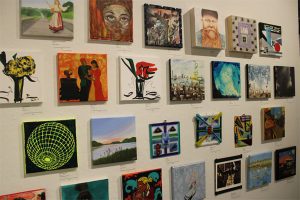
 Whether you’re a professional artist or just like to dabble, if you want to simply stroll and look at art or want a chance to purchase some local art for your home, there are opportunities at ArtWorks. You can take a class, participate in a public art project, have your own work included in a planned exhibition or even have your own personal show hosted in their space. Building and developing community through the arts is the goal of this nonprofit, through exposure of artists’ works as well as exposure to non-artists of the creativity and art itself.
Whether you’re a professional artist or just like to dabble, if you want to simply stroll and look at art or want a chance to purchase some local art for your home, there are opportunities at ArtWorks. You can take a class, participate in a public art project, have your own work included in a planned exhibition or even have your own personal show hosted in their space. Building and developing community through the arts is the goal of this nonprofit, through exposure of artists’ works as well as exposure to non-artists of the creativity and art itself.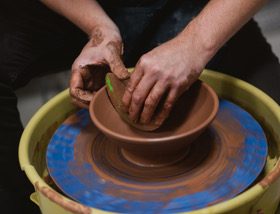 Another 100 artists now have their work on display at
Another 100 artists now have their work on display at 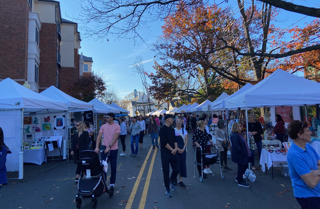 Since its founding in 1967, Arts Council of Princeton has aimed to fulfill its belief that the arts play an integral role in a healthy society and strong quality of life. Like Artworks, the Arts Council has created public displays of art around the community, such as the LOVE mural at Princeton Shopping Center and the Parklet built outside of
Since its founding in 1967, Arts Council of Princeton has aimed to fulfill its belief that the arts play an integral role in a healthy society and strong quality of life. Like Artworks, the Arts Council has created public displays of art around the community, such as the LOVE mural at Princeton Shopping Center and the Parklet built outside of  “Our two temporary gallery spaces are designed to balance each other in presenting a range of exhibitions exploring some of the most dynamic aspects of contemporary artistic practice. The scale of Art on Hulfish allows us to be present both thematic and single-artist exhibitions, at the level of either group exhibitions or single artist surveys,” says James Steward, Nancy A. Nasher-David J. Haemisegger, Class of 1976, Director of Princeton University Art Museum. “By contrast, the intimate nature of the gallery spaces in historic Bainbridge House is better suited to single-artist projects; during these years of construction, we feel it’s most impactful to focus these primarily on early-career artists, some of them receiving their first museum exhibitions.”
“Our two temporary gallery spaces are designed to balance each other in presenting a range of exhibitions exploring some of the most dynamic aspects of contemporary artistic practice. The scale of Art on Hulfish allows us to be present both thematic and single-artist exhibitions, at the level of either group exhibitions or single artist surveys,” says James Steward, Nancy A. Nasher-David J. Haemisegger, Class of 1976, Director of Princeton University Art Museum. “By contrast, the intimate nature of the gallery spaces in historic Bainbridge House is better suited to single-artist projects; during these years of construction, we feel it’s most impactful to focus these primarily on early-career artists, some of them receiving their first museum exhibitions.”
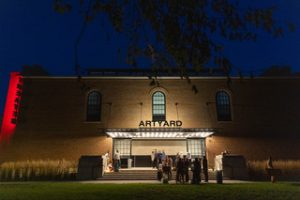
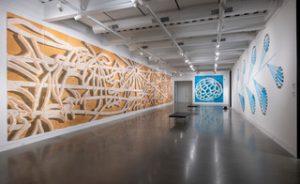
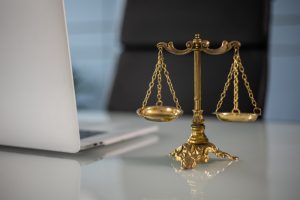 Seldom in life is everything cut and dry. Life is often more of a balancing act. Trying to pit wants vs. needs, help vs. harm, others vs. yourself. I could go on, but I think you get the point. Especially after last week’s elections, which saw some voting in an effort to get what they want while others were voting to prevent what they don’t want.
Seldom in life is everything cut and dry. Life is often more of a balancing act. Trying to pit wants vs. needs, help vs. harm, others vs. yourself. I could go on, but I think you get the point. Especially after last week’s elections, which saw some voting in an effort to get what they want while others were voting to prevent what they don’t want. When you look forward to your Thanksgiving feast, are you dreaming of the turkey or the sides? Do you get through the meal for the dessert or are you savoring every bite you eat? When planning a Turkey-Day menu, there are a lot of things to consider, ensuring your guests leave full and satisfied. What is the right balance? While most would agree on some basic needs, there are some nuances.
When you look forward to your Thanksgiving feast, are you dreaming of the turkey or the sides? Do you get through the meal for the dessert or are you savoring every bite you eat? When planning a Turkey-Day menu, there are a lot of things to consider, ensuring your guests leave full and satisfied. What is the right balance? While most would agree on some basic needs, there are some nuances. If you are planning a full vegan or vegetarian meal, the sides become even more important. Sweet potato souffle, mashed potatoes, gravy, stuffing (cornbread or sausage were stated favorites), brussel sprouts, green bean casserole and cranberry sauce topped people’s preferences. Some eat their foods separately, and for others it’s the “smoosh” of eating it all together that makes it great! What makes these sides even more special? Several that took our survey said they are once-a-year treats.
If you are planning a full vegan or vegetarian meal, the sides become even more important. Sweet potato souffle, mashed potatoes, gravy, stuffing (cornbread or sausage were stated favorites), brussel sprouts, green bean casserole and cranberry sauce topped people’s preferences. Some eat their foods separately, and for others it’s the “smoosh” of eating it all together that makes it great! What makes these sides even more special? Several that took our survey said they are once-a-year treats.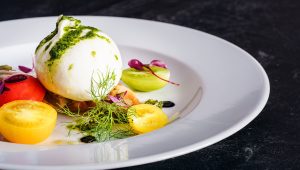 “Offering both Italian and American sides, starters… antipasti, zuppa, salads, cheese, salumi,” Raoul Momo says of his family’s meal. As co-owner of
“Offering both Italian and American sides, starters… antipasti, zuppa, salads, cheese, salumi,” Raoul Momo says of his family’s meal. As co-owner of 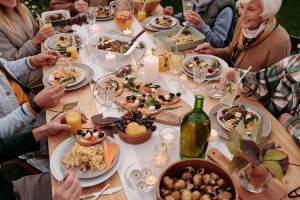 Personal preference of the chef and family traditions tend to dictate what will be served, but there are some general guidelines, shares Shelley Wiseman, chef, author and owner of
Personal preference of the chef and family traditions tend to dictate what will be served, but there are some general guidelines, shares Shelley Wiseman, chef, author and owner of  Whether you buy it cooked or make it yourself, be sure to serve both white and dark meat, to suit everyone’s needs. And don’t forget to save the carcass (some guests find that to be their favorite part!). Guidelines suggest 1-2 pounds of turkey per guest (don’t worry about cooking one too large, as the leftovers are even better). Wiseman offers some guidance on how to cook your turkey to perfection:
Whether you buy it cooked or make it yourself, be sure to serve both white and dark meat, to suit everyone’s needs. And don’t forget to save the carcass (some guests find that to be their favorite part!). Guidelines suggest 1-2 pounds of turkey per guest (don’t worry about cooking one too large, as the leftovers are even better). Wiseman offers some guidance on how to cook your turkey to perfection: “All diets are off that day,” Angelakis states, as Olive’s prepares many sweets for Thanksgiving. “No one forgets about dessert. We do a lot of dessert. We sell traditional pies and also do lemon merengue, chocolate mousse pie, other specialty desserts. By far the most popular is pumpkin, it’s the favorite.”
“All diets are off that day,” Angelakis states, as Olive’s prepares many sweets for Thanksgiving. “No one forgets about dessert. We do a lot of dessert. We sell traditional pies and also do lemon merengue, chocolate mousse pie, other specialty desserts. By far the most popular is pumpkin, it’s the favorite.”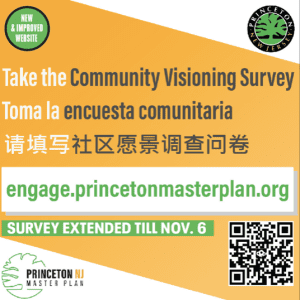
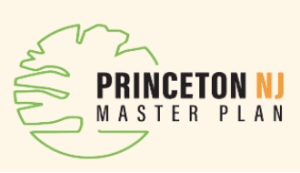 According to the
According to the  “It’s more than just land use because it is tied into so many things,” shares Justin Lesko, Princeton’s Acting Planning Director/Senior Planner. “Even if you’re not interested in planning this legal document, you still can be interested in taking part and contributing to it because it touches upon open space, recreation, how we get around, cars, e-bikes, mass transit, historic presentation, green building and sustainability, etc. It’s not just something I am going to type up that is going to sit on a shelf and never gets looked at.”
“It’s more than just land use because it is tied into so many things,” shares Justin Lesko, Princeton’s Acting Planning Director/Senior Planner. “Even if you’re not interested in planning this legal document, you still can be interested in taking part and contributing to it because it touches upon open space, recreation, how we get around, cars, e-bikes, mass transit, historic presentation, green building and sustainability, etc. It’s not just something I am going to type up that is going to sit on a shelf and never gets looked at.” Unfortunately, the Princeton government has been utilizing an outdated “map” for far too many years. Though there were some updates made since 1996, the essential community input remains and must be reworked to address what is needed and wanted today.
Unfortunately, the Princeton government has been utilizing an outdated “map” for far too many years. Though there were some updates made since 1996, the essential community input remains and must be reworked to address what is needed and wanted today. So, who is contributing most to the direction of the new Master Plan? You! Every effort is being made to ensure that anyone that wants to share their thoughts, concerns and desires, has a chance to do so. In addition to the opportunity to attend Steering Committee meetings, locals have and will be invited to take part in community surveys and are requested at open houses (the first of which will be at Princeton Public Library November 30th from 4-7pm).
So, who is contributing most to the direction of the new Master Plan? You! Every effort is being made to ensure that anyone that wants to share their thoughts, concerns and desires, has a chance to do so. In addition to the opportunity to attend Steering Committee meetings, locals have and will be invited to take part in community surveys and are requested at open houses (the first of which will be at Princeton Public Library November 30th from 4-7pm).
 “Some think of it as a college town, which it is, but in a very different way than, say, a Big 10 town. For others, it is a bedroom community for commuters to New York, which it is, but not the way Westchester County or Greenwich, Connecticut, are. Some see it as a small city, which, again, it sort of is and sort of isn’t. Others, particularly some of the people who grew up here or who have been here longer than I have, idealize it as small town, one that was certainly experienced differently if you grew up in Witherspoon Jackson or Jugtown, as opposed to the Western Section. The challenge of this Master Plan is to forge consensus on a way forward out of these multiple and distinctive views of what Princeton is and should become,” Quinn points out.
“Some think of it as a college town, which it is, but in a very different way than, say, a Big 10 town. For others, it is a bedroom community for commuters to New York, which it is, but not the way Westchester County or Greenwich, Connecticut, are. Some see it as a small city, which, again, it sort of is and sort of isn’t. Others, particularly some of the people who grew up here or who have been here longer than I have, idealize it as small town, one that was certainly experienced differently if you grew up in Witherspoon Jackson or Jugtown, as opposed to the Western Section. The challenge of this Master Plan is to forge consensus on a way forward out of these multiple and distinctive views of what Princeton is and should become,” Quinn points out.